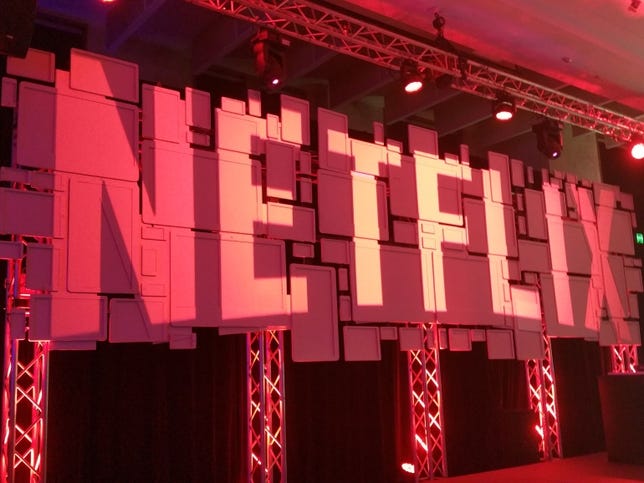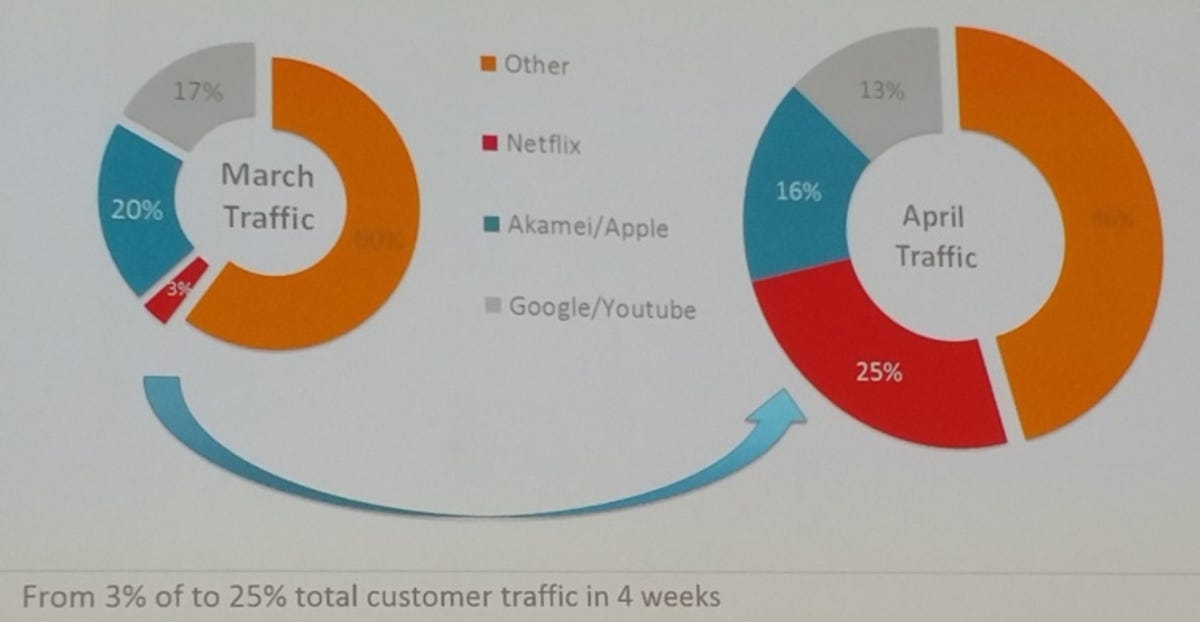
Image by Claire Reilly/CNET
After locking down a deal to give its customers unlimited and unmetered access to the US-based streaming service, iiNet now says that one quarter of its total traffic comes from users accessing Netflix.
Speaking at the CommsDay Summit in Sydney, iiNet chief technology officer Mark Dioguardi said households across Australia were now all saying the same “five-word sentence” on a nightly basis — “Shall we watch another episode?” — and that it was up to ISPs to ensure that they offer the good customer experience that is expected of them.
However, he also argued that as content streaming becomes the norm, Australia’s internet infrastructure and pricing models will need to adapt.
In March, before Netflix launched in Australia, Dioguardi said the service accounted for about 3 percent of network traffic. This compared to 17 percent for Google content, including YouTube, and 20 percent for Akamai, which delivers Apple content including iTunes downloads and iOS updates.
However, in time for the launch of Netflix in Australia, iiNet announced a deal that would allow its customers to stream unlimited content through the subscription service without it counting towards a monthly data cap.
According to Dioguardi, the deal was made to appeal to internet users eager to stream content on demand, and iiNet’s traffic increased accordingly.
“We wanted to roll out the red carpet for Netflix because we thought that was a key demand [from customers],” he said. “What has happened has been absolutely amazing. About 15 days ago, we announced that Netflix makes up 15 percent of our total traffic. Today it’s 25 percent.”
“When we say we rolled out the red carpet, we rolled it out, and people are just storming down it.”


Image by Claire Reilly/CNET
Importantly for iiNet, the increase in Netflix traffic has not come at the cost of other traffic, which has seen “hardly any change”. Instead, Dioguardi says “nearly everything we’ve seen in terms of Netflix growth has been additive.”
According to stats from the company, there are 5 times as many streams via Apple TV over Chromecast, 10 times more on PlayStation than on Xbox and more than 80 percent of streams are HD or better.
However, Dioguardi acknowledged issues with the way consumers were currently accessing the internet and how they would continue to use streaming services as the NBN rolled out further across Australia, noting that it wasn’t just about speeds, but also capacity of the network.
While he recognised that DSL and fibre were well equipped for content streaming, there were questions about whether HFC networks were equipped to deal with heavy streaming traffic as they transitioned to the NBN. He also noted that 3G, 4G and Satellite networks are “not going to cut it” when it comes to the kinds of streaming habits that Australians will adopt in the future.
“What’s going to happen in the next couple of years?” he posited. “What’s going to happen when the 30 percent of Smart TVs today which are mostly high definition go to 80 percent Smart TVs all at 4K? When the streaming services really take off, what’s going to happen to demand?”
He referenced the so-called “consumption tax” that NBN Co charges retail service providers such as iiNet to transfer data over the national broadband network — known as the connectivity virtual circuit (CVC) charge.
As these costs currently stand, Dioguardi said everyday internet users could see a AU$26-a-month surcharge for modest HD streaming habits, and that this figure could climb as high as AU$60 per user per month for “occasional 4K streaming” via the NBN.
According to Dioguardi, “it’s a serious matter that needs addressing.”
“I think it’s going to go to a world where people are going to want and need 4K streaming. The 4K content will be available, the networks can certainly take it…but can we afford to pay for it on the NBN?”




